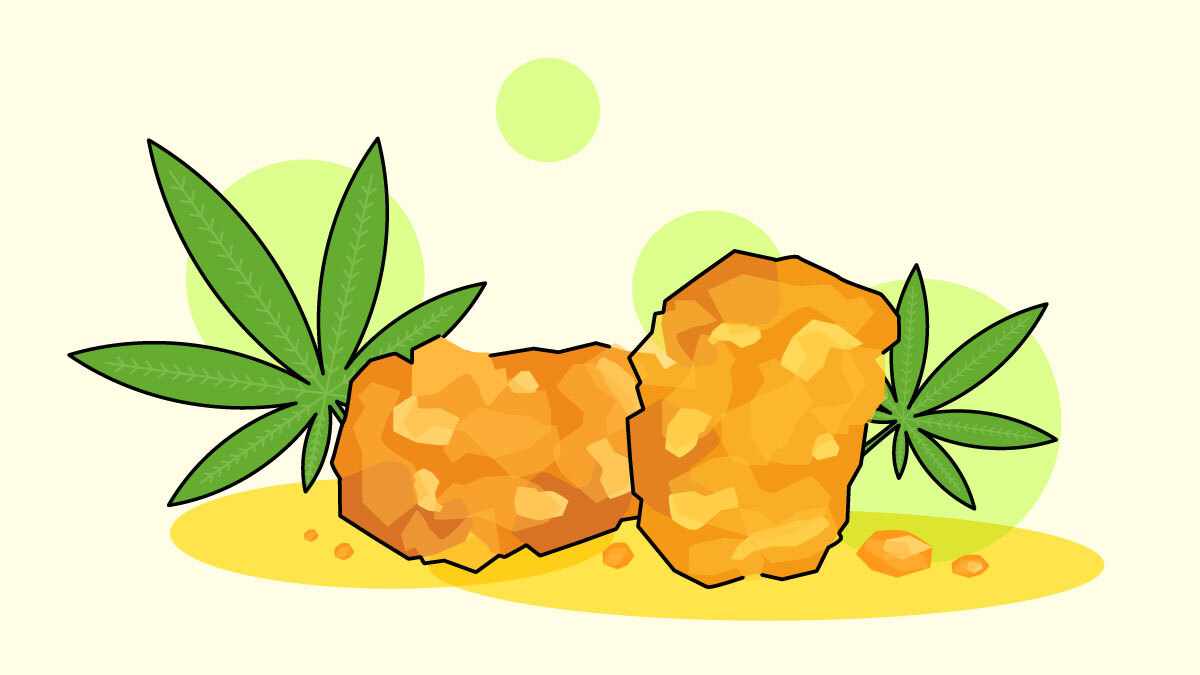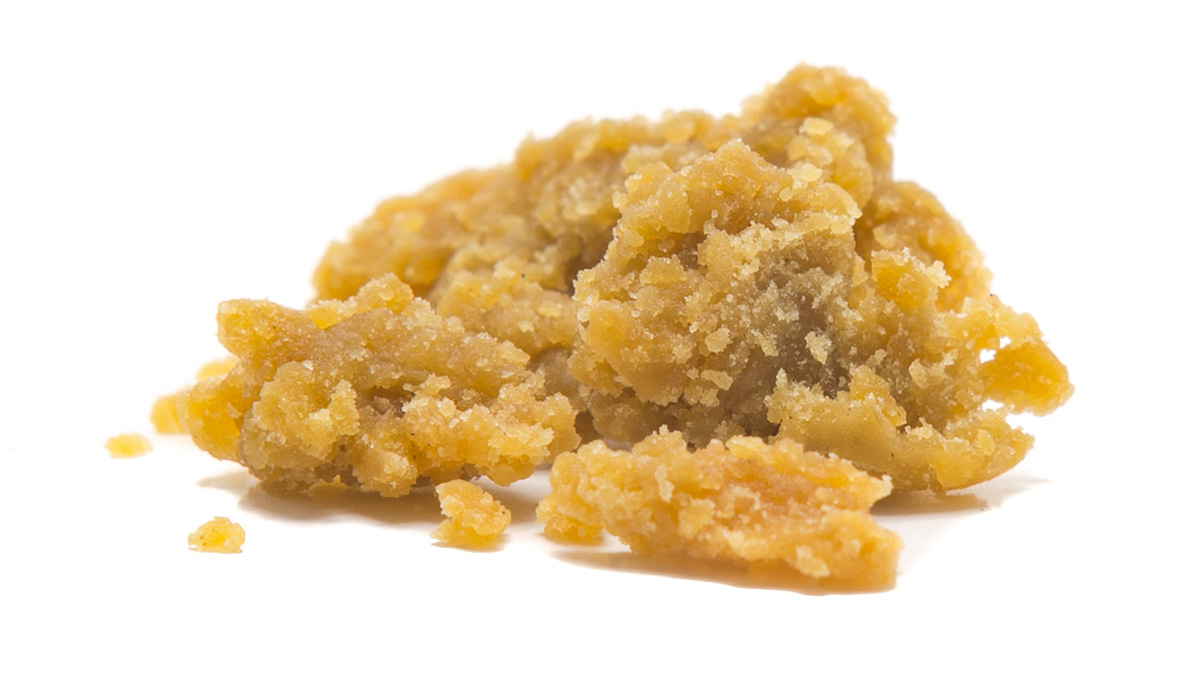How to Make Weed Crumble

When you search online for the phrase “How to Make Crumble,” you’ll find all sorts of tasty-looking recipes for apple crumble, raspberry crumble and peach crumble. Not many articles about weed.
You’re in luck, though. You’ve found the article you’re looking for.
We’ve got details on the best way to make and use weed crumble. It’s a cannabis concentrate that won’t just tickle your taste buds but will blast your brain and/or ease your medical issues as well.
Crumble is most often used for dabbing. But it’s one of the most versatile forms of concentrate, so it can be used in a number of other ways as well.
Here’s the bad news: it’s not easy to make. The weed crumble you find in dispensaries is high-end stuff; it’s been produced with specialized equipment and experienced personnel.
Can you make a crumble on your own? Yes — but that doesn’t mean you should.
Let’s learn more.
The Many Forms of Cannabis Concentrates
It’s difficult to come up with a discipline, special interest, or hobby that has more names for the same thing than you find in the weed world.
Bud, pot, flower, dope, herb, chronic, grass.
Joint, doob, bone, fatty, reefer.
The same is true for weed concentrates, which are often referred to by umbrella terms like hash oil, butane hash oil, honey oil, butane honey oil, and BHO.
No matter what you call it, though, it’s extremely potent. That’s because it’s produced by extracting the THC (and sometimes the CBD and terpenes) from cannabis, and then concentrating it into a form that can have 3-4 times the THC content of ordinary raw flower.
The weed you smoke may be 10-25% THC; concentrates may contain as much as 90% THC.
BHO doesn’t always take the form of oil. Producers can slightly alter the process used to make hash oil to create final products with a number of different consistencies. The most common:
- Wax: BHO in an opaque, malleable form.
- Shatter: A translucent sheet that breaks easily.
- Budder and Badder: Hash oil with a softer, whipped consistency.
- Taffy: A stretchier type of concentrate also called pull ‘n’ snap.
And then there’s crumble, which is actually shatter that’s been melted and then whipped to create a texture that’s — yep — crumbly. Crumble can also be used by playing with temperatures during the creation of wax.
There’s a constant debate among weed users whether one form of BHO is “better” than the others.
In scientific terms, they’re all essentially the same when it comes to potency. If there is a difference it’s usually due to the quality of the cannabis used to create the concentrate, and/or the proficiency of the technicians creating it.
The real distinction between different forms of hash oil is how easy they are for the user to manipulate, and how they can be used.
How Do You Use Crumble?

Most people dab crumble. It’s not quite as easy as shatter to put onto a dab nail or e-nail, but the task isn’t too difficult if you have a small, spoon-shaped dab tool.
The real beauty of crumble, though, is that it’s much easier to add to flower than concentrates like shatter or wax. That’s a great way to boost the potency of your weed when you’re rolling a joint or blunt; you can also quickly use crumble to top a bowl of raw weed for extra juice.
There are other uses for crumble as well. It’s ideal for packing a vape pen designed to handle cannabis concentrates, and it melts easily if you want to use it to make potent cannabutter for your edible recipes.
How the Professionals Make Crumble
We have to be careful here.
First of all, DIYers don’t have access to the equipment needed to make high-quality shatter, nor do they have the necessary expertise. Even more importantly, the process is dangerous; it requires the use of a flammable and potentially-explosive solvent like butane gas. In fact, making hash oil is illegal for home users in many states.
So we’re not going to go step-by-step in this section. Instead, here’s a general idea of how crumble is produced in a manufacturing facility.
Frozen weed plants (they’re frozen to lock in their properties) are placed into a special chamber, and chilled butane gas is passed through the cannabis. The solvent extracts cannabinoids and terpenes and carries them to another chamber. The gas is turned into liquid hash oil, some of the plant material is separated, and the butane is allowed to evaporate.
Further steps involving pressure and temperature further purify the BHO. Finally, it’s whipped for a long time to create crumble’s trademark texture.
That’s how the crumble concentrate you’ll find in dispensaries is created. Can you approximate the process on your own?
How to Make Crumble at Home
It’s possible to make your own crumble, but it isn’t easy. You’ll need to purchase special equipment, and the process is still somewhat risky since a flammable solvent is used for production.
It’s not as dangerous as full-scale butane extraction, though, and if you’re really determined to do it, we feel comfortable giving you the recipe.
First, here’s the equipment you’ll have to buy:
- A BHO extraction roller tube — many people use something called the “Extractor” which costs less than $100
- A can of butane lighter fluid like Colibri gas
- An infrared thermometer
- A desiccator, an air-tight glass container designed to absorb moisture
- A vacuum pump
- A Pyrex tray and a silicone mat
Still sure you want to do this? OK, let’s start; these instructions are courtesy of wayofleaf.com.
- Pack weed into the roller tube as tightly as possible; no air should be able to get through.
- Put the tube and the can of gas into the freezer for a day.
- Place the tube onto the Pyrex tray, add the gas to the tube, and let it evaporate. That will leave a paste in the tube. It’s best to complete this step outdoors where there’s ample ventilation.
- Heat a pot of water on low heat — not on a gas stove, because the open flame could ignite leftover gas.
- Spread the paste on the Pyrex tray and place it over the pot so it heats up gently.
- Put the thermometer into the paste and make sure the temperature stays below 105°. If it gets close, take the tray off of the heat and let it cool, wipe condensation off the tray, and replace it on the pot.
- As bubbles appear in the paste, pop them with a dab tool. As the paste becomes dry instead of gooey, scrape it with a razor blade so it doesn’t stick to the tray.
- After 2-3 hours the paste should have turned into a solid mass. Scrape it all off of the tray onto the silicone mat.
- Put your concentrate into the desiccator and connect the vacuum pump to it. Run the pump until the BHO is completely dry, but do not open the desiccator or turn off the pump.
- Once the product is 100% dry, release the vacuum pressure and remove it from the desiccator.
You now have crumble that’s ready to be stored in an air-tight glass container.
And here’s our educated guess: next time, you’ll just buy your crumble at a dispensary.
How to Make Crumble: FAQ
Q: Is that process really dangerous?
A: It definitely can be, because you’re using a flammable solvent that could explode if you’re not careful. If you’re going to try making your own crumble, be sure to do the extraction in a well-ventilated area, stay away from the tube while the butane gas is doing its work — and never have any open flame anywhere near your work area. (That means no smoking!)
Q: Is there a physical difference between crumble and a concentrate-like shatter, other than their consistencies?
A: Just the one that determines their texture. Shatter contains less moisture, which is why it can harden into a solid sheet. Crumble’s higher moisture content is what causes it to take on its crumbly consistency. That difference doesn’t have any effect on their potency, though.
Reference
Bidwell, L. C., YorkWilliams, S. L., Mueller, R. L., Bryan, A. D., & Hutchison, K. E. (2018). Exploring cannabis concentrates on the legal market: User profiles, product strength, and health-related outcomes. Addictive behaviors reports, 8, 102-106. [1]